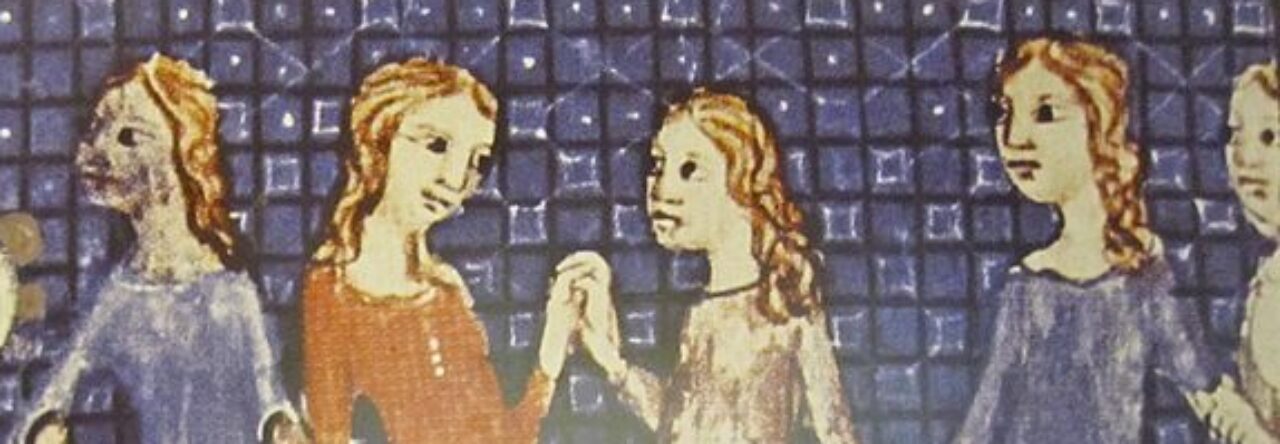Medieval Europe was a decidedly rural landscape and the majority of the population lived in rural areas. Increasingly over the course of the late medieval period, however, people migrated to cities often seeking better economic opportunities. Those migrants included women who came both with their families and on their own.
In today’s class, we’re going to focus on one city in the late medieval period–Paris–and think about how the experiences of women who lived there were gendered. As we’ll learn in our podcast episode for today’s class, Paris was the largest city in medieval Europe with a population of around 200 000. We’ll explore the various types of economic activities that women engaged in, some of the limitations they faced in their lives, as well as why it’s important to consider women’s urban experiences in terms of place and space.
To Listen (all students)
Today features the second episode of our podcast series! For in person students, please make sure to listen to this episode BEFORE coming to class. For online students, make sure you listen to it before engaging in discussion on the chatboard.
In this episode, I speak with Dr. Emily Hutchison about her work on medieval Paris as a gendered landscape and how using mapping as a methodological tool can help us discover new things about the experiences of medieval women.
Podcast available here:
In the podcast episode, Dr. Hutchison refers to two maps that she has created as part of her gendered spatial analysis of medieval Paris. The maps are available on the page below. It is password protected with the same password we use for our readings page:
To Read
“Paris Guild Regulations”
“Case of a Woman Physician”
Menagier de Paris
All available here:
To Do
This class, we’re going to consider the diverse experiences of women through the examples provided in our three readings. In the podcast episode, Dr, Hutchinson mentioned her mapping of Paris as seen through documentary evidence and we’ll take a look at her map and think about it in the context of our readings.
In person students
I will lead discussion for this class as I’d like to take you through the map Dr. Hutchison shared and link it to our analysis of the documents assigned.
Online students
Questions will be posted in your chatboard channels as a means of starting discussion. They will connect the assigned readings, the podcast episode, and the map (shared below).
Students who are signed up to lead the online discussion are responsible for monitoring your classmates’ comments and responding to them to keep the discussion going. If there are questions that arise with which I can help, don’t forget to tag me @dwl
Comments should be posted by Thursday May 19th at midnight
